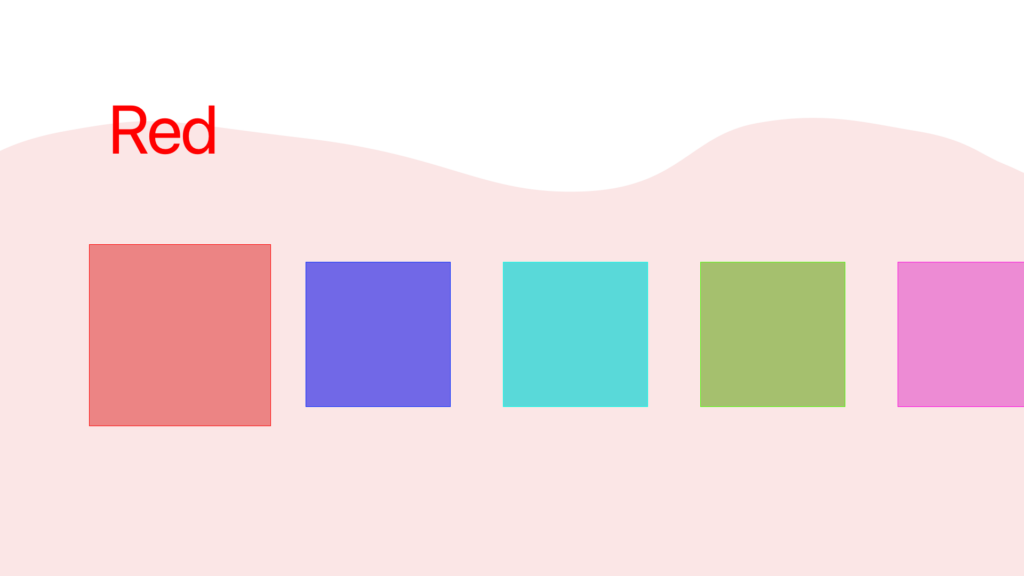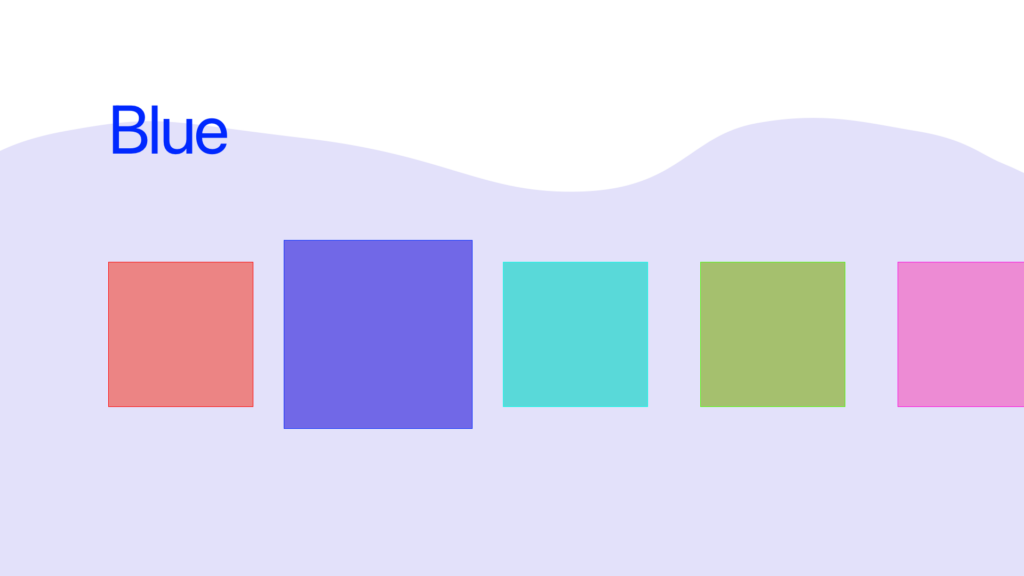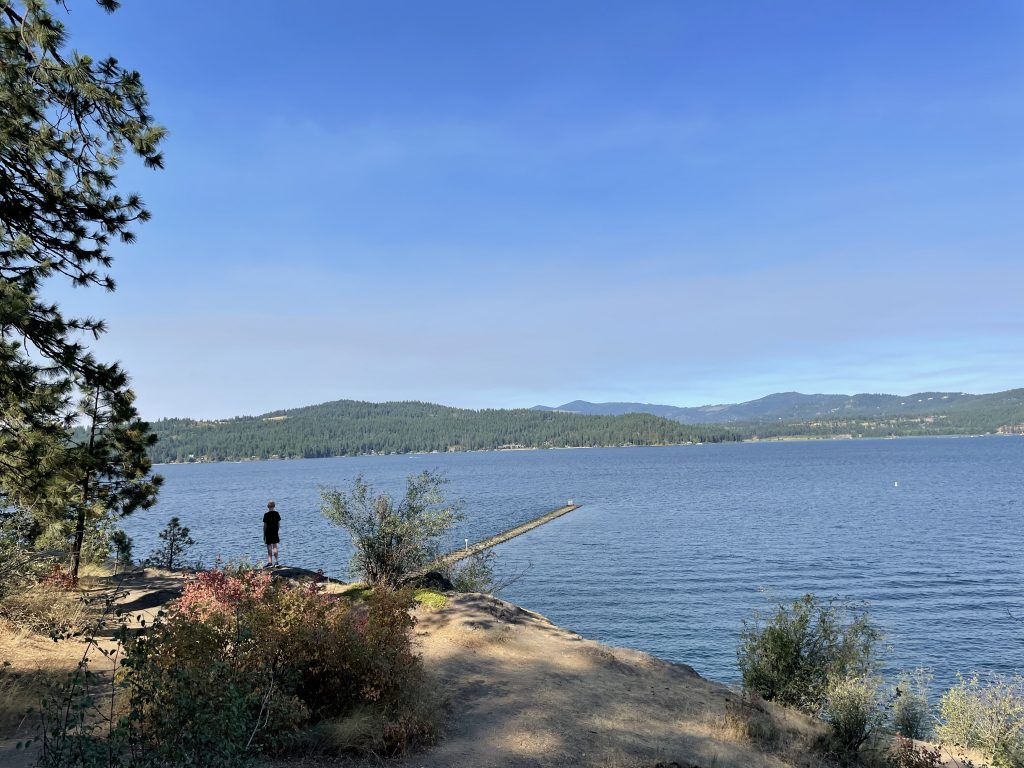I was in Coeur d’Alene a while back, and had the chance to go for a hike around Tubbs Hill. If you’re ever in the area, I recommend it – it’s a nice little hike, and there’s some great views along the way.
Silver Falls
This weekend, I am attending a wedding and then moving; in place of my usual weekly words, please enjoy a couple photos I took at Silver Falls State Park.
Async/await in Vapor
Swift 5.5 with the new async/await features is going to be released quite soon, and I’m very excited. And while all the new async APIs in UIKit and SwiftUI are neat, they don’t actually catch my eye all that much. As of now, async/await will only be available on the fall-2021 Apple OS releases, and following the general pattern of “current iOS minus one” that means async/await will be available starting… fall of 2022.
However, that’s not the only place I use Swift! I also dabble in server-side Swift when I can, and over there, it’s ready-ish to use now.1
And hey, would you look at that, Vapor’s already got a PR open for adding async variants of the core APIs. Neat! Let’s see how this is implemented.
And, hey, it’s… pretty simple, really! All it takes is getting into the (pre-release!) _NIOConcurrency module, and suddenly any EventLoopFuture has a new function: public func get() async throws -> T. The implementation of that is also lovely and simple, thanks to Swift’s withUnsafeThrowingContinuation and the way SwiftNIO already works.
Now, where I’m more excited about this than Vapor is in Fluent — a lot of the server-side work I do is in C#, using the excellent Entity Framework Core. Database requests are straightforward: MyModel model = await db.MyModels.FirstOrDefaultAsync(m => m.id == id);
With the non-async version of Vapor and Fluent, this is… a bit more difficult to work with. MyModel.find(id, on: req.db).flatMap { model in ... }
At first glance it doesn’t look too bad, but notice the flatMap — we can’t just continue writing our code, we have to move into a new scope. Hello, pyramid of doom.
But now?2 Now, we can await things. Fluent looks more like Entity Framework all of a sudden: let model = try await MyModel.find(id, on: req.db)
That’s already a much nicer API to work with, and it delivers on the promise of async/await: much simpler flow of code. I’m excited to untangle some of my more complex flatMap pyramids.
What I’m still curious about, and will need to do some testing with, is to see how well it does with concurrency. It’s a known issue in Entity Framework that you can’t run multiple requests against a single DbContext; what I’m wondering is if Fluent has this same limitation, or if I can safely do something like:
async let model1 = try MyModel.find(id1, on: req.db)
async let model2 = try MyModel.find(id2, on: req.db)
let result = MyResult(model1: await model1, model2: await model2)
That, I don’t yet know! I’ll have to do some experimenting and try it — which may be a future blog post. Still, even if I have to immediately await everything, the improvements to my code’s legibility will be worth it.
- Disclaimer: Swift 5.5 is, as of this writing, pre-release; similarly, the versions of Swift-NIO and Vapor that provide async APIs are pre-release. Don’t use these in production. ↩
- Well, soon: this as another draft PR as of this writing. ↩
Islands.swift
Back in undergrad, I did a lot of programming challenges – the sort of thing that shows up as a somewhat-contrived question in an interview. Great way to learn about automated testing, though, as in a school environment it’s basically an automated test suite where you aren’t allowed to see the tests.1
I’ve been wanting to brush up on algorithms a bit, and figured this would be a good way to do it. This time around, though, I’m using Swift; C++ was a fine language to learn, but I have exactly no desire to use it anymore.
So, the first problem I found whilst aimlessly googling was “Islands”. Given a grid of some sort (could be [[Bool]], although in this case I’ve done one as [[Character]], with '1' and '0' being the inputs2), count the number of islands in it.
An island, in this case, is any contiguous collection of '1' is in the grid, while all the the '0's are ocean.
Step One: Ask Questions
First question: what does ‘contiguous’ mean? Can we move diagonally, or only in the four cardinal directions?
Only the four cardinal directions, in this example.
Alright. Next, what happens at the edges? Do we Asteroids-style loop around, or is it just ‘out of bounds == ocean’?
Out of bounds is ocean.
Excellent! Means we don’t have any literal edge cases.
Final question before I start actually digging into the problem, how are we hooking into the test case?
protocol Islands {
func numIslands(_ grid: [[Character]]) -> Int
}
Alright, simple enough. Let’s get cracking.
Step Two: Brainstorm
My first thought upon seeing a grid is “flood fill.” Now, this isn’t quite a flood fill, because the whole point is that it’s not all interconnected, but that at least gives me a starting point – for a flood fill, you want recursion. And you want to remember where you’ve been, so you can make a base case – otherwise, you’ll just loop forever. O(infinity) isn’t really ideal.
So, what’s the actual algorithm here?
Simple enough: for each point on the grid, check if it’s part of a new island. If it is, add one to our count of islands; if it isn’t, don’t. Move on to the next point on the grid.
Now, how do we check if it’s a new island? Also pretty simple: check if we’ve been here before; if we have, it’s not a new island. Then check if it’s an island; if it isn’t, it’s also not a new island. And, now that we know it’s a new island, we go recursive – mark that we’ve been to this spot, and flood fill our way across the neighboring tiles on the grid until we run out of island.
Step Three: Code
class Solution: Islands {
private var visited: [[Bool]] = [] // (1)
private var grid: [[Character]] = [] // (2)
@discardableResult
private func isNewIsland(x: Int, y: Int) -> Bool { // (3)
guard x >= 0 else { return false }
guard y >= 0 else { return false }
guard x < grid.count else { return false }
guard y < grid[0].count else { return false }
if (visited[x][y]) { return false }
visited[x][y] = true
if (grid[x][y] == "1") {
// visit all neighbors
isNewIsland(x: x+1, y: y)
isNewIsland(x: x-1, y: y)
isNewIsland(x: x, y: y+1)
isNewIsland(x: x, y: y-1)
return true
} else {
return false
}
}
func numIslands(_ grid: [[Character]]) -> Int { // (4)
// precondition checks
guard grid.count > 0 else {
return 0
}
guard grid[0].count > 0 else {
return 0
}
// reset visited state
let subItem = Array<Bool>(repeating: false, count: grid[0].count)
self.visited = Array<Array<Bool>>(repeating: subItem, count: grid.count)
self.grid = grid
var islandCount = 0
for i in 0..<grid.count {
for j in 0..<grid[i].count {
if isNewIsland(x: i, y: j) {
islandCount = islandCount + 1
}
}
}
return islandCount
}
}
Let’s go through this bit by bit.
visitedis key – we need to know where we’ve been. Unlike the folks making the problem statement, I actually know what my data type is –[[Bool]]- This… is mostly for ease of passing it around. While I could write up my
isNewIslandfunction in a purely-functional sense, with it taking in the coordinates, visited state, and grid, and then outputting the result… well, that’s kinda silly, really. isNewIslandis the bulk of the work. Let’s go through it.- The first four lines are checking that we’ve got valid input. This saves us from needing to check the range every time we call the method; if we try to do something that we can’t, it’ll just return false. Admittedly, I’m not checking that the grid properly exists before using it, but that’s what
privateis for – this is an implementation detail. - Next, check if we’ve visited this spot before. If we have, we’re done – it’s not a new island!
- Before we go any further, mark this spot as visited! Important, because we may be recursing shortly, and we don’t want to get caught in an infinite loop.
- Check if this is an island at all. If it isn’t, we’re done – this wasn’t a new island. If it is, though, we recurse. This is where the
@discardableResultcomes in – since we’ve got an early bail-out for “we’ve already visited this spot”, we know we’ll never be checking the same island twice, so we actually don’t care about the result of checking the neighboring spaces, we just need it to happen… so that they get marked as visited. And after we’re done marking the whole island as visited, we can finally return true, telling the caller (if they’re listening!) that this was a new island.
- The first four lines are checking that we’ve got valid input. This saves us from needing to check the range every time we call the method; if we try to do something that we can’t, it’ll just return false. Admittedly, I’m not checking that the grid properly exists before using it, but that’s what
- Finally, our implementation of
numIslands. Mostly it’s just checking for valid inputs – Swift can enforce at compile-time that nobody tries to pass us anything completely the wrong type, but it can’t force people to give us a grid with dimensions greater than 0 in either direction, so we need to check that ourselves. After that, we set up ourvisitedas all-false, copy the grid, and loop through it, counting up our islands.
Step Four: Test
This part, I will mostly leave to your imagination; for myself, I just hit ‘run’ and let the automated tests do their thing. In an interview, Step Two should also include coming up with some test cases and running through them on your pseudo code – and remember to include one or two invalid inputs!
After that, if your tests pass, you could talk about changes you might make. Given my numerous remarks about [[Character]] instead of [[Boolean]], my thought would be to make it generic – have a grid of [[T]] and take a (T) -> Bool closure that tells you whether or not a grid point is an island. I’d also want to comment up the code a bit more, which I’ve neglected to do in this case as I’m writing a blog post around it instead.
Now, having already spoiled the answer, I’ll go ahead and mention that I tried this out at LeetCode; while this one may not be the most fun for you in the immediate wake of my explainer, they’ve got plenty of other solutions you could take a crack at, and a variety of languages to use. Give it a go, it’s kinda fun!
Playlist of the Month: July 2021
This month has been very long, and terrifyingly hot. Nobody tell me that it’s August now, I don’t want to think about that yet.
Cologne – Haux on Something to Remember – EP
How It Was – Yoste on A Few Brief Moments – EP
We’ll Be Alright – Yoste on A Few Brief Moments – EP
DON’T TELL THE BOYS – Petey on Checkin’ Up on Buds – EP
Spaces – Jaymes Young on Spaces – Single
Arcade – Duncan Laurence on Arcade – Single
twentyfive – Yoste on twentyfive – Single
Oh Dear, Oh Beaux – beaux on A Love Letter To the Moments Spent Outside
Neon Medusa – The Midnight on Horror Show – EP
BLACK TEETH – SYML on DIM – EP
Magic – Phillip LaRue on Night Swimming – Single
Rät – Penelope Scott on Public Void
Good in Red – The Midnight on Horror Show – EP
Coldplay (feat. Vic Mensa) – Mr Hudson on Coldplay (feat. Vic Mensa) – Single
Save Me – Majik on It’s Alright / Save Me – Single
Expectations – Joel Ansett on Expectations – Single
Magazines – Anson Seabra on Magazines – Single
Paranoid – Lani Rose on To: Keep You From: Hurting Me
Imported – Jessie Reyez & 6LACK on Imported – Single
Belong – slenderbodies on Komorebi
Don’t Go Puttin Wishes in My Head – TORRES on Thirstier
Todo Estaba Bien – Carlos Sadness & Manuel Medrano on Tropical Jesus
Baci Dalla Tunisia – Mahmood on Ghettolimpo
Talata – Mahmood on Ghettolimpo
T’Amo – Mahmood on Ghettolimpo
I Only Go South – Yoste on I Only Go South – Single
Phonky Town – Playaphonk on Phonky Town – Single
b!!!rds – Sir Sly on The Rise & Fall of Loverboy
All Eyes On Me – Bo Burnham on Inside (The Songs)1
Cherry – Chromatics on Cherry (Deluxe)
Bezos I – Bo Burnham on Inside (The Songs)
Distorted Light Beam – Bastille on Distorted Light Beam – Single
Red – bennytheghost on Supersonic – EP
Sister – ferdinant. on Airplanes – EP
Your Power – Billie Eilish on Happier Than Ever
Politicians – Hayden Calnin on Politicians – Single2
Every Time – Landon Austin on Every Time – Single
Lost Cause – Billie Eilish on Happier Than Ever
who put blood in my drink? – SYML & sagun on who put blood in my drink? – Single
Follow You – Imagine Dragons on Follow You / Cutthroat – Single
Lean Into Life – Petey on Lean Into Life
Play Dead – Armen Paul on Play Dead – Single
barcelona – Winnetka Bowling League & Sasha Alex Sloan on barcelona – Single
The Only One – Chord Overstreet on Stone Man – EP
Skeletons – HARLOR on Letters To an X – EP
old cartoons – FJ Law on TAPE 13
Fingers Crossed – Trevor Daniel & Julia Michaels on Fingers Crossed – Single
Mi Gente – J Balvin & Willy William on Vibras
If I Go (Embers Edition) – Blakey on If I Go – Single
Hurricane – Thirty Seconds to Mars on This Is War
War – Chance Peña on War – Single
Tangerine – Benicio Bryant on Tangerine – Single
Cruel Love – Teflon Sega on Cruel Love – Single
ME PASE (feat. Farruko) – Enrique Iglesias on ME PASE (feat. Farruko) – Single
Why Is Everyone Sad? – Yoste on Why Is Everyone Sad? – Single
Vampires – The Midnight & Magik*Magik on Vampires – Single5
Good Girls – CHVRCHES on Screen Violence
Motley Crew – Post Malone on Motley Crew – Single
Don’t You Look At Me That Way – flora cash on Chronically Beautiful – EP
- But seriously, if Burnham doesn’t win an Emmy for Inside, I… don’t know what I’ll do, really. Disregard the entire concept of the Emmys for the future, I suppose. ↩
- I’ve yet to tune in to the entirety of the lyrics here, but the bits I do listen to feel about right for the title, which I like. ↩
- “… where the normal people are. But don’t worry: I’m going to help you hide the fact that you’re high as shit.” ↩
- My taste in music, at the moment, is definitely Very Autotune on the vocals. ↩
- Definitely my favorite new addition this month; kinda reminds me of the Westworld theme. ↩
The Self-Deprecation Jar
In the last few months, I’ve made surprisingly few changes to my home screen. One of them, though, was reorganizing what appears in the Shortcuts widget. I combined all my ‘playlist’ stuff into one Shortcut that checks what time it is and tries to guess what playlist I want, and then gives me a list of the options, in case it guesses wrong.1 With that additional space, though, I needed a new Shortcut to occupy the fourth slot. Can’t have an unbalanced home screen, after all!
What I eventually arrived at was the Self-Deprecation Jar. I can’t claim the idea as my own: I first came across it entitled “the self-depreciation jar,” but renamed it to reference self-deprecating humor.
The core idea is something roughly in the area of cognitive behavioral therapy, though I am emphatically not a mental health-care professional, so take what I say with a grain of salt.
The point, though, is that every time you say (or write, or think too loudly—pick a delineation that works well for you!) something negative about yourself, you put a dollar in the jar. (Or a quarter, or a penny—again, it’s meant as a very flexible system!)
I’ve found it a helpful thought technology: it draws attention, and imposes a negative penalty, on the sort of negative self-talk that’s far too easy to fall into. I suspect the former effect there is more meaningful than the latter, in the same way that people tend to have success toward their diet goals regardless of the diet, simply by paying more attention to what they’re eating.
Now, as a millennial, I own a great many mason jars… but I don’t actually own any cash. Instead, I put together a digital version of this in Shortcuts. In my implementation, I wanted to have the ‘cost’ be $1 put into my investment account—I’m still incurring an in-the-moment penalty, but the end result is a positive for Future Grey. Alternately, pull up a deserving charity and throw some money their way!2
Now, I do that investing via Acorns (shameless affiliate link!), which has a minimum of $5 for a transfer, so the Shortcut had to be a bit more complex than just an “Open App” action. Happily, I have Data Jar installed, which makes it nice and easy to store data across runs of a Shortcut. A little modular math later, and we’ve got a Shortcut that, every time you tap it, increments a counter; and every time that counter is a multiple of 5, it opens Acorns and throws me a notification to say “hey, that’s five, put in $5.”
After a bit of tinkering with the Shortcuts editor, I’ve arrived at this version, which will prompt you to customize as necessary—tweak the frequency, the message, and what app to open, and you’re off to the races.
And, hey. Be kind to yourself. Remember: You’re a lovely human being, and the world is a better place for having you in it.
- It’s an educated guess, really, considering the way I structure my playlists and my day. ↩
- I’ve shared this idea here and there, and a fairly large Discord I’m a member of now has a custom :jar: emoji that we bring out when someone is being self-deprecating. I will take approximately no credit for that, though, as it’s my friend Madi who took it upon herself to be the spirit of kindness in the server and remind people to take care of themselves. ↩
“Fine Structure”
I actually read this almost immediately after “Ed”, and it makes for a heck of contrast. Where “Ed” is mostly pretty light and quick, this is all kinds of convoluted in terms of what’s going on with the plot. But it also does that thing that Hughes does really well—it spans a massive amount of time and space, and covers a staggering amount of ground.
The basic concept is truly excellent, though: what if, every time you tried some Cool Science Fiction Thing, it worked—once. And then never again.
It’s a really interesting constraint for a work of science fiction, as well: how can you do enough Cool Science Fiction Things for a full book, when the core concept is that those concepts are consumable? It makes for, as I said, a sprawling world that must be built out—larger than “Ed” or “Ra” had to be, and bringing in some definite “higher-dimensional beings would look a lot like Cthulhu, wouldn’t they?” energy.
The end result is, I can’t recommend this as readily as I did “Ed”, because it’s boggling at times. But it’s a great payoff, and ties together things you wouldn’t at all expect, much better than you’d expect. If that sounds good to you, give it a read.
I’m reading Hughes’ work all out of order, but happily, there’s really no shared universe from story to story, so it’s not an issue. And, having now read all four of his books, I can say that “Ed” would be my recommended starting place, if you want to give it a go.1 It’s the lightest – a very silly beginning, and told by a narrator who’s further outside the story than any of his other works. While it’s not quite to that space opera feel, with the big events happening in the background and the story following regular-sized people just trying to make it through, it’s more human in scale.
It’s also very episodic most of the way through, so it’s easier to pick up and put back down for a while, if that’s your reading style, though there’s enough callbacks that you’ll be rewarded for going right through. (And, because this is a web-first piece of fiction, if you’re reading it online, a great deal of those callbacks are hyperlinks to the correct chapter – an easy way to catch yourself back up without devolving into “as you know, Bob” territory.)
All in all, “Ed” is a fairly short read, and a fun one. It’s got that characteristic “sprawling across space and time” feel that’s characteristic of Sam Hughes, but at no point do you feel like you need to stop and take notes to try to follow what’s going on. I quite enjoyed it. Give it a read, and if it really captures your interest, buy a copy!
- I’ve previous reviewed “Ra”, and will at some point write up my thoughts on “Fine Structure”, but my stance on “There Is No Antimemetics Division” is the simple “if you like SCP, you’ll like this; if you don’t know what that means, this isn’t a good starting point.” ↩
Dev Blogs
I recently had someone ask for recommendations for dev blogs to fill out their RSS reader. After going through what I have in my RSS reader, I realized that this would make a good little post—these have all been helpful resources to me, so it seems likely they could be helpful to someone else. (I have also been informed by a friend of mine that I should include myself in this list, but I figure you’re already here. Go ahead and throw this site URL into your RSS reader, the feed is nice and discoverable.)
So, in no particular order, developer blogs:
- Use Your Loaf posts fun little things, usually regarding iOS development.
- The Always Right Institute does terrible, terrible things with Swift, and they’re consistently a delight to read.
- SwiftLee writes very solid articles explaining various Swift language features, iOS API things, and general career tips.
- Swift with Majid does weekly deep dives into SwiftUI… and may or may not be the inspiration for my recent spate of programming posts.
- Swift by Sundell is one of the definitive Swift sites; not only does John Sundell write up plenty of great articles (see ‘Swift Fundamentals’ as a great starting point!), he also has a couple podcasts, if listening is more your style.
- Reda Lemeden does some fun explorations of Swift, as well as more general things with his “This Week I Learned” posts.
- Gui Rambo does some really neat explorations of what’s possible on iOS when he’s not cracking open the developer betas to see what features Apple forgot to feature-flag out of the build.
- Povilas Staškus hasn’t posted in a while, but his posts are worth a back-read; the Jekyll-to-Publish migration was a fun one. And, hey, putting an infrequent poster in RSS is what RSS is for!
- NSHipster is a venerable name in the iOS dev world; not as actively updated as it once was, but the back catalog is extremely solid, and will quite often be one of the first results when Googling various things.
- Kristaps Grinbergs writes in a similar vein to Swift with Majid, with explanations of various parts of the SwiftUI API.
- Julia Evans is a break from my very iOS-heavy list so far; she does comics and zines explaining general programming concepts, command line tools, and all sorts of stuff. Seriously good explanations, I recommend checking them out.
- Brent Simmons blogs about NetNewsWire, life as a developer, and neat bits of history in the Apple world.
- Steven Troughton-Smith may well be the expert on Catalyst apps; his recent post of various sample apps is a wonderful resource if you’re looking into bringing an iPad app to macOS.
- Erica Sadun’s blog has recently been a lot of neat macOS automation stuff; she’s also a frequent contributor to Swift itself.
- On Hacking With Swift, Paul Hudson provides excellent WWDC coverage and an amazing array of tutorials and documentation.1 If you’re just getting started, go through his free 100 Days of Swift and 100 Days of SwiftUI courses.
And, in addition to all those blogs, I also funnel email newsletters into RSS whenever possible. My top picks from that list are:
- iOS Goodies provides a little commentary with a list of articles.
- iOS Dev Weekly comes with much more commentary; I’m also a fan of the “and finally…” section, it’s a nice ending every week.
Network Caching With Combine
I’m going to lead in to this post by saying that this isn’t a Definitively Correct way to do this; it works for my use case, but has some definitive issues. Still, in the interest of transparency—and not running out of content for this blog—I’m going to share it anyways.
Last week, I shared a fun little enum-based way of representing API endpoints in a type-safe manner. It’s also pretty easy to expand on to use as the key for an in-memory cache of endpoint results.
(This, by the by, is Caveat 1: it’s a purely in-memory cache, with nothing being persisted to disk. User quits out of your app? Cache is gone. For what I’m working on, though, this is the behavior we want, so it works well.)
Let’s get started with the actual API surface we want:
class ApiClient {
func get<T: Decodable>(endpoint: Endpoint, reset: Bool = false) -> T? {
...
}
}
Now, the funky thing about how I’ve got this implemented is that this get method is idempotent – if you call it 10,000 times for the same Endpoint, it’s only going to spit out one network request, and will just continue returning nil until something is actually present. (Well, unless you’re setting reset to true – that’s really in there for debug purposes more than anything else. Give the API I’m using on this project, it’s almost never necessary.)
And, for use with SwiftUI, we want it to be called again when the network request finishes, so we’ll make it an ObservableObject.
Next, let’s work out how to store things to achieve that. The main thing we need is somewhere to store the network requests, and somewhere to store the results – the aforementioned in-memory cache. And, to get that “call the method again when the cache changes” behavior, we can make it @Published:
class ApiClient: ObservableObject {
private var loaders: [Endpoint:AnyCancellable] = [:]
@Published private var cache: [Endpoint:Decodable] = [:]
}
Now, to make Endpoint we need it to be viable dictionary key, which is pretty easy to accomplish:
extension Endpoint: Hashable { }
Finally, we need to implement the actual method. Without further ado:
class ApiClient: ObservableObject {
private var loaders: [Endpoint:AnyCancellable] = [:]
@Published private var cache: [Endpoint:Decodable] = [:]
func get<T: Decodable>(endpoint: Endpoint, reset: Bool = false) -> T? {
if reset {
cache[endpoint] = nil
loaders[endpoint] = nil // which implicitly calls loaders[endpoint]?.cancel(), via the deinit
}
if let _item = cache[endpoint], let item = _item as? T {
print("\(endpoint): cache hit")
return item
}
if loaders[endpoint] == nil {
print("\(endpoint): cache miss; beginning load")
loaders[endpoint] = URLSession.shared.dataTaskPublisher(for: endpoint.url) // 1
.map(\.data)
.decode(type: T.self, decoder: JSONDecoder()) // 2
.receive(on: DispatchQueue.main)
.sink(receiveCompletion: { (completion) in
print(completion)
}, receiveValue: { (item) in
self.cache[endpoint] = item
})
}
print("\(endpoint): cache miss; loading already in progress")
return nil
}
}
Two notes in there:
- You may want to swap out the use of
URLSession.sharedhere for a parameter into the class’ constructor – it’ll make your testing a bit easier. - Even more so than (1), you probably want to swap out
JSONDecoder()here for something stored on the class – that decoder isn’t free to initialize!
Now, as I mentioned, this has some limitations. The first one I already went over – it’s a purely in-memory cache. The second is at the call site – since this is generic across Decodable, you have to annotate at the call site what the expected return type is, which isn’t the most ergonomic.
My actual thought on fixing that was very TypeScript-inspired – creating overloads that specify T based on the given endpoint. In Swift, this isn’t too difficult, just adding something like:
extension ApiClient {
func getCategory(_ id: Category.ID, reset: Bool = false) -> Category? {
get<Category>(endpoint: .category(id), reset: reset)
}
}
Which, of course, can get a bit repetitive depending on the number of endpoints you have. But hey, it works for my use case, and it may be helpful to someone else, so: blog post!
As a post-credits scene of sort, the TypeScript version is a bit silly, and takes advantage of the absolutely bonkers way method overloads work in TypeScript. I’ll throw out some pseudocode:
class ApiClient{
func get(endpoint: Endpoint.Category, reset: bool): Category?
func get<T>(endpoint: Endpoint, reset: bool: T? {
...
}
}
Yes, method overloads like this are just declaring the method multiple times before the actual body. And yes, you can specify an individual enum case as a type.
Playlist of the Month: June 2021
This month, Dolby Atmos suddenly became a thing in the streaming music world, and I’ve been having fun with it! If you can, give it a try, it’s neat. (Admittedly, most of the discernible difference is just a matter of “this is a nice remaster,” but still.)
Cologne – Haux on Something to Remember – EP
Slowly – ODIE on Slowly – Single
How It Was – Yoste on A Few Brief Moments – EP
Come On – Will Young on Echoes
We’ll Be Alright – Yoste on A Few Brief Moments – EP
DON’T TELL THE BOYS – Petey on Checkin’ Up on Buds – EP
Spaces – Jaymes Young on Spaces – Single
Arcade – Duncan Laurence on Arcade – Single
twentyfive – Yoste on twentyfive – Single
Lightning – Hayden Calnin on Lightning – Single
Oh Dear, Oh Beaux – beaux on A Love Letter To the Moments Spent Outside
I Can’t Lose You – Isak Danielson on Tomorrow Never Came
MONTERO (Call Me By Your Name) – Lil Nas X on MONTERO (Call Me By Your Name) – Single
On My Own (feat. Kid Cudi) – Jaden on ERYS
Neon Medusa – The Midnight on Horror Show – EP
Into Your Arms – Vide on Into Your Arms – Single
BLACK TEETH – SYML on DIM – EP
Magic – Phillip LaRue on Night Swimming – Single
Astronaut In The Ocean – Masked Wolf on Astronaut In The Ocean – Single
Rät – Penelope Scott on Public Void
Good in Red – The Midnight on Horror Show – EP
Somewhere We Can Be Alone – Gunnar Gehl on Somewhere We Can Be Alone – Single
Symphony – Forester on Symphony – Single
The Stranger – The Midnight on Horror Show – EP
Ghost in Your Stereo – The Midnight on Horror Show – EP
Coldplay (feat. Vic Mensa) – Mr Hudson on Coldplay (feat. Vic Mensa) – Single
Save Me – Majik on It’s Alright / Save Me – Single1
Tiempo – Ozuna on Tiempo – Single
Attached – Shawn James on Attached – Single
Hold Me – Lani Rose on To: Keep You From: Hurting Me
Hell On Earth – Turbo on Hell On Earth – Single
Can’t Work You Out – Nathan Ball on Can’t Work You Out – Single
All We Have Is Now (feat. Trixie) – Blewbird on All We Have Is Now (feat. Trixie) – Single
False Confidence – Noah Kahan on Busyhead
Expectations – Joel Ansett on Expectations – Single
Magazines – Anson Seabra on Magazines – Single
Blinding Lights – The Weeknd on After Hours
In Your Eyes – The Weeknd on After Hours
Paranoid – Lani Rose on To: Keep You From: Hurting Me
Imported – Jessie Reyez & 6LACK on Imported – Single2
Belong – slenderbodies on Komorebi
u love u – blackbear & Tate McRae on u love u – Single
Revolver – bülow on Revolver – Single
Goosebumps – HVME on Goosebumps – Single
There Is A Light That Never Goes Out – The Smiths on The Queen Is Dead3
Sunflower (Spider-Man: Into the Spider-Verse) – Post Malone & Swae Lee on Hollywood’s Bleeding
Late At Night – Roddy Ricch on Late At Night – Single
Like That – JP Saxe on Dangerous Levels of Introspection
Don’t Go Puttin Wishes in My Head – TORRES on Thirstier4
Todo Estaba Bien – Carlos Sadness & Manuel Medrano on Tropical Jesus
My Rajneesh – Sufjan Stevens on America – EP
Baci Dalla Tunisia – Mahmood on Ghettolimpo
Talata – Mahmood on Ghettolimpo5
T’Amo – Mahmood on Ghettolimpo
Karma – Mahmood & Woodkid on Ghettolimpo
Klan (Spanish Version) – Mahmood & DRD on Ghettolimpo
Kobra – Mahmood on Ghettolimpo
Out in LA – Aquilo on Out in LA – Single
I Only Go South – Yoste on I Only Go South – Single
GROWING PAINS – AJ Mitchell on GROWING PAINS – Single
Dinero – Trinidad Cardona on Dinero – Single
In the End – Linkin Park on Hybrid Theory6
Player 2 – Rory Webley on Player 2 – Single
Under the Covers (feat. DT James) – Blewbird on Under the Covers (feat. DT James) – Single
Phonky Town – Playaphonk on Phonky Town – Single7
b!!!rds – Sir Sly on The Rise & Fall of Loverboy
Los Tontos (Live at NPR’s Tiny Desk) – C. Tangana & Kiko Veneno on El Madrileño (Live at NPR’s Tiny Desk) – Single8
Ride – Amber Run on Ride – Single
Instant Crush (feat. Julian Casablancas) – Daft Punk on Random Access Memories
bad guy – Billie Eilish on WHEN WE ALL FALL ASLEEP, WHERE DO WE GO?
All Eyes On Me – Bo Burnham on Inside (The Songs)9
Cherry – Chromatics on Cherry (Deluxe)
Bezos I – Bo Burnham on Inside (The Songs)
Welcome to the Internet – Bo Burnham on Inside (The Songs)
Distorted Light Beam – Bastille on Distorted Light Beam – Single
- if I listen to Majik enough, will they come back? I can dream ↩
- “Some people call me six-lack” ↩
- It’s really neat living in the future, because this song popped into my head the other day, and I just announced to the air that I wanted to hear it, and then, suddenly, there it was. ↩
- This feels like my childhood, but in a way that doesn’t evoke nostalgia, somehow? It’s a very strange feeling, but I quite like it. ↩
- I really enjoyed this whole album; I think Talata is my favorite, just because it’s the weirdest. ↩
- I think this is the best Atmos remaster I’ve listened to so far. ↩
- “This sounds like demons trying to tell you something.” – my sister ↩
- This sounds like it shouldn’t be possible, what with the pandemic still ongoing, but it’s a delightful piece of music. ↩
- If you haven’t yet watched Inside on Netflix, I heartily recommend it — it’s an incredible work of art. The fact that I got this song out of it, which is one of my favorites this month, is a nice plus. ↩
Safe API Calls with Enums
I really hate runtime errors. I’m a firm believer in the concept that as many errors as conceivably possible should be caught at compile-time. It makes sense, after all: a compile time error for me means a few minutes of my time spent fixing it; a runtime error for my users means a few seconds of their time staring at an error… multiplied across however many users there may be. And, really, how often are you working on an app where you outnumber the users?
In this vein, I’ve been tinkering with how to handle network requests. The easy first thing to do was to swap out stringly-typed URLs for an enum, and Swift’s associated values make this a breeze:
enum Endpoint {
case globalConfiguration
case category(Category.ID)
case product(Product.ID)
...
}
Your definitions may vary – this is, of course, very specific to the actual use case. But look at that – not only do we have clear representations of the various endpoints available, we can even link the variable components of those URLs to being the proper type for the model we expect to get back. How’s that for self-documenting code?
Next, we need a way to convert from this lovely enum to the actual URL we’re going to use to make our requests. I’ve split this up a little bit:
extension Endpoint {
var pathComponents: String {
switch self {
case .globalConfiguration:
return "/config.json"
case .category(let ID):
return "/category/\(ID).json"
case .product(let ID):
return "/product?id=\(ID)"
...
}
}
var url: URL {
#if DEBUG
return URL(string: "https://dev.my.app")!.appendingPathComponent(pathComponents)
#else
return URL(string: "https://api.my.app")!.appendingPathComponent(pathComponents)
#endif
}
}
Et voila, converting to our known URLs, and a nice little “automatically use the dev server in debug mode” check, while we’re at it.
Now, depending on how you’re organizing your networking code, we can tweak the API surface here a little bit to make things clearer. Add those extensions in the same file as the code that makes the network requests, and declare them fileprivate – and now, you’ve got an automatic reminder from the compiler if you start writing some URL-based networking code outside of the network component. No more leaky abstraction!
WWDC21
I’m writing this a bit after WWDC has ended, and publishing it a bit further after that, so pardon the tardiness as I share my thoughts, in no particular order:
- As a user, I am quite excited by the new functionality in FaceTime, and the new Focus system for managing notifications. The system of tiered notifications looks great, and I’m excited for the, oh, 15 minutes most people will have between ‘installing iOS 15’ and ‘an app first abusing the notification level to send them spam.’1 In iOS 16, can we get a “report notification as spam” button that immediately flags the app for App Review to yell at?
- As both a developer and user, I was immensely excited to see the ManagedSettings and ManagedSettingsUI frameworks – I really like the concept of Screen Time for externalized self-control, and being able to use custom implementations or build my own seemed like a dream.2 Unfortunately, all those dreams were immediately crushed by the reveal that this all requires FamilyControls, so not only can I not do anything interesting with it as a developer, I can’t even use it myself. Because, as we all know, the only use case for “my phone won’t let me use it to waste time” is “parents managing their children.”
- Swift’s implementation of async/await looks great, and the stuff Apple’s doing with
@MainActorseems to have met the goal of “the language eliminates an entire class of error” that initially gave us optionals, so I’m quite happy about that. I hope Vapor updates to async/await soon, I’d love to untangle some of myflatMapchains. - The new Human Interface Guidelines section on Inclusion is very well-written and hits on some important points.
- I am incredibly excited about the virtual KVM thing coming to macOS and iPadOS – my desk setup features two monitors for macOS, and an iPad perpetually on the side, and the idea of being able to control the iPad without taking my hands off the main keyboard and mouse is very exciting.3
- Safari on iOS got support for web extensions, which is neat. I also like that they’re pulling things down toward the bottom of the screen, should be more reachable.
- Safari on macOS might finally do something that Mozilla never managed to do: convince me to switch to Firefox. I sincerely hope this is the peak of “aesthetics over functionality” in Apple’s design, and that it gets better from here, because this is a mess: lower contrast text, the core UI element moves around all the time so you can’t have any muscle memory, and they’ve buried every single button behind a ‘more’ menu.
- SwiftUI got lots of little updates, but the thing that I may be most excited about is the simple quality of life improvements as a result of SE-299 –
.listStyle(.insetGrouped)is much easier to type than.listStyle(InsetGroupedListStyle()), especially considering that Xcode can actually suggest.insetGrouped.
- In my case, it’ll probably be a couple days, and then Apple Music will punch through a Focus mode to notify me that Billie Eilish has a new single or something. ↩
- I already have a name for the app I want to build using these API. My first feature would just be “the existing Screen Time system, but it actually knows how time works.” Something like 90% of the time that I hit ‘one more minute’ I’m instead given a couple seconds. Apple, I know that time is hard, but it isn’t that hard. ↩
- Why the iPad? Because iPadOS is sandboxed, which limits the sort of bugs that Teams can introduce and evil that Zoom can. Sure, they both have macOS apps – but you shouldn’t install either of them. ↩
Circle of Magic
I suspect I have mentioned in the past that Tamora Pierce’s Circle of Magic series is one of my favorite things to read. As a general rule, I reread most of her bibliography at least once a year – quite often when I’m stressed. Tamora Pierce is my comfort reading.1
I’ve recently stumbled my way into a lovely group of people, and among many of the projects we created for ourselves was something of a book club. And we started with the Circle of Magic.2
And here’s where I begin to struggle in writing this, nominally a review of the first quartet. I’ve been reading and rereading these books for so long that it’s impossible for me to come at them with fresh eyes. I can’t even begin to put myself in the mind of someone who hasn’t read them, to try to figure out what about them I should mention to convince someone they’re worth the time to read. I wouldn’t be the person I am today without their influence.
Instead, I’m just going to list some thoughts about the different books, in no particular order.
Tris’s Book is, I think, my favorite of the four. I identified the most with Tris, growing up – a total bookworm, and too quick a temper. It is, unsurprisingly, in Tris’s Book that we get to see what Tris is thinking, and what made her that person – and, conversely, that we see her start to grow, and learn to trust.
Briar’s Book scares me to this day. I’d say “even more so, considering,” but, having just reread it last week, I don’t think the amount it scares me has changed, even in light of living through a pandemic. It’s still terrifying – and it turns out to have been pretty accurate about just how scary, and lonely, and crushing it all is.
“Most disasters are fast, and big. You can see everyone else’s life got overturned when yours did. Houses are smashed, livestock’s dead. But plagues isolate people. They shut themselves inside while disease takes a life at a time, day after day. It adds up. Whole cities break under the load of what was lost. People stop trusting each other, because you don’t know who’s sick.”
Daja’s Book is all about the important of family, and how family doesn’t always match what you grew up thinking it would. You can find more people who love you, and who you love, and they can be just as much family as the one you were born into.
Daja’s Book is also… a big spoiler, in how I’m going to phrase this, so I’ll tuck it into a footnote. You’ve been warned!3
Sandry’s Book… is coming home.
I cannot, cannot express how much I love these books. Please, please give them a try.4 And, because I adore Tamora Pierce, also check out her patreon – the next goal is an admirable one.5
- In fact, many times the thing that makes me realize quite how stressed I am is the realization that I’ve picked up one of her novels. It’s automatic! ↩
- The book club may have come about as a result of my strongly urging everyone to read these books. As far as the #influencer life goes, “encouraging people to read Tamora Pierce” is probably the best possible outcome. ↩
- Daja’s Book is a beautiful example of a happy ending in a book, with everything getting tied together beautifully. It’s not just that every thread gets wrapped up nicely, it’s that half of them are solved by being the solution to another problem. To borrow a phrase that I first heard as a descriptor of another favorite piece of media of mine, it’s competence porn. ↩
- I’m breaking my usual ‘use Bookshop links instead of Amazon’ pattern here, but Sandry’s Book isn’t available on Bookshop at all, and based on the paperback prices on Amazon, is thoroughly out of print. The Kindle edition is available, though! ↩
- I’m of the opinion that she (or her staff) haven’t done a good enough job of advertising this, because I’ve had her public blog in my RSS reader for years, and just found out about the Patreon a few days ago. So now I’m doing my part by telling you, dear reader. Go support her! She’s great! ↩
FocusedValue on tvOS
Alright, let’s set the scene with a mildly contrived example: you’ve got a list of things, and you want the surrounding View to match them. For a tvOS app, this could be swapping out the background and some title text to match the selected episode; since I don’t feel like coming up with some fake episode titles, however, we’re going to go with colors:


At first thought, you’d probably reach for @State, something akin to:
struct ColorsView: View {
@State var selectedColor: Color
let colors: [Color]
var body: some View {
VStack {
Text(colorName(selectedColor))
HStack {
ForEach(colors) { color in
Rectangle().fill(color).focusable()
}
}
}
.background(WaveyShape().fill(selectedColor)
}
}
Not too bad; attach on onFocus to the Rectangle() and it should work!
But… what if there’s more layers in between? Instead of a Rectangle(), you’ve got some other View in there, maybe doing some other logic and stuff.
Oof, now we’re going to need a @Binding, and – oh, what happens if the user swipes out of the rectangles and to our nav bar, can selectedColor be nil?
Happily, SwiftUI has something built out to handle basically this exact scenario: @FocusedValue. There’s some great tutorials out there on how to do this for a macOS app, which allows you to wire up the menu bar to respond to your selection, but it works just as well on tvOS.
Let’s get started:
struct FocusedColorKey: FocusedValueKey {
typealias Value = Color
}
extension FocusedValues {
var color: FocusedColorKey.Value? {
get { self[FocusedColorKey.self] }
set { self[FocusedSeriesKey.self] = newValue }
}
}
Now we’ve got our new FocusedValue available, so let’s use it:
struct ColorsView: View {
@FocusedValue(\.color) var selectedColor: Color?
var body: some View {
VStack {
Text(colorName(selectedColor ?? Color.clear))
HStack {
ForEach(colors) {
ColorRectangleView(color: $0)
}
}
}
.background(WaveyShape().fill(selectedColor ?? Color.clear)
}
}
The one big change here is that selectedColor can be nil. I’ve gone ahead and defaulted to .clear, but do what fits your use case.
Finally, we need to set the focused item:
struct ColorRectangleView: View {
let color: Color
var body: some View {
Rectangle()
.fill(color)
.focusable()
.focusedValue(\.color, color)
}
}
}
Et voila, it works!
Now, this may not seem like a huge change over doing it via @Binding, but keep in mind: @FocusedValue is a singleton. You can have every view in your app respond to this, without passing @Bindings every which way.











